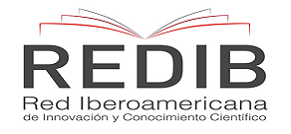Effects of a strength-resistance warm-up protocol on ankle range of motion, strength, and dynamic balance in adults who do weight training
Keywords:
Strength, endurance, dynamic balance, warmup, ROM, stabilityAbstract
Objectives: In this study, the relationship between a specific warm-up protocol and improvement in ankle range of motion (ROM), strength, and balance in adults who do weight training was investigated.
Methods: The study involved 20 adults who do weight training who participated in a physical exercise program at a private fitness center. Tests such as the Y-balance test were used to evaluate dynamic balance, the Calf-raise to measure the strength of the ankle plantar flexors and the Lunge-test to evaluate the ROM of ankle dorsiflexion. A Spearman rank analysis was applied to examine the relationship between ankle plantar flexor strength and dynamic balance and ROM tests.
Results: It was found that a specific form of warm-up, which included flossing, resulted in a statistically significant increase in ankle dorsiflexion. This suggests that this warm-up protocol may be beneficial to adults who do weight training by providing increased ankle ROM, which could help prevent injury and improve their performance.
Conclusions: In conclusion, this study suggests that a specific warm-up protocol, incorporating techniques such as flossing, may be effective in improving ankle ROM, strength, and balance in adults who do weight training. This could be beneficial to optimize performance and reduce the risk of injury in this sporting population.
Downloads
References
Donovan L, Hart JM, Saliba SA, Park J, Feger MA, Herb CC, Hertel J. Rehabilitation for chronic ankle instability with or without destabilization devices: a randomized controlled trial. J Athl Train. 2016;51(3):233–251. https://doi.org/10.4085/1062-6050-51.3.09
Behm DG, Cavanaugh T, Quigley P, Reid JC, Nardi PS, Marchetti PH. Acute bouts of upper and lower body static and dynamic stretching increase non-local joint range of motion. Eur J Appl Physiol. 2016;116(1):241–249. https://doi.org/10.1007/s00421-015-3270-1
Mason-Mackay AR, Whatman C, Reid D. The effect of reduced ankle dorsiflexion on lower extremity mechanics during landing: A systematic review. J Sci Med Sport. 2017;20(5):451–458. https://doi.org/10.1016/j.jsams.2015.06.006
Scattone Silva R, Nakagawa TH, Ferreira AL, Garcia LC, Santos JE, Serrão FV. Lower limb strength and flexibility in athletes with and without patellar tendinopathy. Phys Ther Sport. 2016;20:19–25. https://doi.org/10.1016/j.ptsp.2015.12.001
Overmoyer GV, Reiser RF. Relationships between lower-extremity flexibility, asymmetries, and the Y Balance Test. J Strength Cond Res. 2015;29(5):1240–1247. https://doi.org/10.1519/JSC.0000000000000693
Behm DG, Duffett C, Wiseman S, Halperin I. Use of topical analgesic and rolling alone or in combination does not increase flexibility, pain pressure threshold, and fatigue endurance—a repeated-measures randomized, within-subjects, exploratory study. J Perform Health Res. 2018;2(1):19–26.
Sánchez JS, González MC, Rodríguez CP. El calentamiento en deportes de equipo: revisión y nuevas perspectivas. Pap Salmant Educ. 2016;20:13–33.
Cejudo A, Robles-Palazón FJ, Ayala F, De Ste Croix M, Ortega-Toro E, Santonja-Medina F, Sainz de Baranda P. Age-related differences in flexibility in soccer players 8–19 years old. PeerJ. 2019;7:e6236. https://doi.org/10.7717/peerj.6236
Ayala F, de Baranda PS, de Ste Croix M. Estiramientos en el calentamiento: diseño de rutinas e impacto sobre el rendimiento. Rev Int Med Cienc Act Fís Deporte. 2012;12(46):349–368.
Arango LFG, Colorado DF, López YV, Gómez GI. Relación entre el rendimiento y la composición corporal medida por DEXA en levantadores de pesas profesionales. J Sport Health Res. 2022;14(3).
Dalmau-Pastor M, Malagelada F, Guelfi M, Vega J. Anatomía del tobillo. Rev Esp Artrosc Cir Articul. 2020;27(1):5–11.
Gámiz-Bermúdez F. Abordaje de la inestabilidad de tobillo desde la fisioterapia. A propósito de un caso. SANUM. 2021;5(3):32-7.
Aravena Pereira CA, Del Canto Bravo DF, Quitral Bueno CM. Inestabilidad de tobillo en adultos: alteraciones de la función muscular. Una revisión sistemática. Universidad de Talca (Chile). 2021.
Almendáriz Pozo PA, Bonifaz Arias IG, Álvarez Zambonino EE, Sánchez Estrada KG. La propiocepción: método de prevención de lesiones de tobillo en deportistas de categoría superior. ATHLOS. Revista Internacional de Ciencias Sociales de la Actividad Física, el Juego y el Deporte. 2020;19(9):1–19.
Jeffreys I. El calentamiento. Maximizar el rendimiento y mejorar el desarrollo físico a largo plazo. Tutor; 2019.
Kendall FP, Creary M, Kendall E, Geise Provance P. Músculos: pruebas, funciones y dolor postural. 4.ª ed. Madrid: Marban; 2000.
Redondo RV. Efectos de la técnica flossing en fisioterapia en pacientes con inestabilidad inespecífica de tobillo. Rev Sanit Investig. 2020;1(3):7.
Souza VH, Baffa O, Garcia MA. Lateralized asymmetries in distribution of muscular evoked responses: An evidence of specialized motor control over an intrinsic hand muscle. Brain Res. 2018;1684:60–6. https://doi.org/10.1016/j.brainres.2018.01.031
Gribble PA, Hertel J. Considerations for normalizing measures of the Star Excursion Balance Test. Measurement in Physical Education and Exercise Science. 2003;7(2):89–100. https://doi.org/10.1207/S15327841MPEE0702_3
Chtara M, Rouissi M, Bragazzi NL, Owen AL, Haddad M, Chamari K. Dynamic balance ability in young elite soccer players: implication of isometric strength. Journal of Sports Medicine and Physical Fitness. 2016;58(4):414–420. https://doi.org/10.23736/S0022-4707.16.06724-4
Hébert-Losier K, Newsham-West RJ, Schneiders AG, Sullivan SJ. Raising the standards of calf-raise testing: a systematic review. Journal of Science and Medicine in Sport. 2009;12(6):594–602. https://doi.org/10.1016/j.jsams.2008.12.628
Andre HI, Carnide F, Borja E, Ramalho F, Santos Rocha R, Veloso AP. Calf-raise senior: a new test for assessment of plantar flexor muscle strength in older adults: protocol, validity, and reliability. Clinical Interventions in Aging. 2016;11:1661–1674. https://doi.org/10.2147/CIA.S115304
Toscano Hernández J. Importancia de la estandarización de los protocolos en el Test de Lunge. 2022. Tesis, Universidad de Barcelona.
Wang SS, Whitney SL, Burdett RG, Janosky JE. Lower extremity muscular flexibility in long distance runners. Journal of Orthopaedic & Sports Physical Therapy. 1993;17(2):102–107. https://doi.org/10.2519/jospt.1993.17.2.102
Dawson KA, Dawson L, Thomas A, Tiidus PM. Effectiveness of regular proactive massage therapy for novice recreational runners. Phys Ther Sport. 2011;12(4):182–7. https://doi.org/10.1016/j.ptsp.2011.02.007
Ricoy Carballo I. Efecto del flossing sobre la dorsiflexión de tobillo durante la ejecución de la sentadilla profunda. 2022. Tesis, Universidad de La Coruña.
Cejudo A, Rubio-Mateo L, Martínez-Romero MT, de Baranda PS. Efecto crónico de un programa corto de flexibilidad dinámica sobre la dorsi-flexión de tobillo en powerlifters competitivos. J Sport Health Res. 2021;13(3):405-416.
Moreno-Muñoz MdM, Argüelles-Cienfuegos J, Rodríguez-Rosell D, Martín-Rodríguez S, Pareja-Blanco F, González-Badillo JJ. The effects of abdominal hypopressive training on postural control and deep trunk muscle activation: a randomized controlled trial. Int J Environ Res Public Health. 2021;18(5):2741. https://doi.org/10.3390/ijerph18052741
Rubio Ferrero P. Efectos en la aplicación de Flossband sobre un calentamiento tradicional con el objetivo de aumentar la dorsiflexión del tobillo en atletas de Crossfit y disminuir la prevalencia de lesiones. 2020. Tesis, Universidad Pontificia Comillas.
Pasurka?M, Lutter?C, Hoppe?MW, Heiss?R, Gaulrapp?H, Ernstberger?A, Engelhardt?M, Grim?C, Forst?R, Hotfiel?T. Ankle flossing alters periarticular stiffness and arterial blood flow in asymptomatic athletes. J Sports Med Phys Fitness. 2020;60(11):1453–1461.
Simbaña G, Jefferson O. Investigación bibliográfica sobre la efectividad del vendaje funcional vs. kinesiotaping para prevenir esguinces de ligamentos no especificados de tobillo en adultos. 2021. Tesis, Universidad Central del Ecuador.
Mills B, Mayo B, Tavares F, Driller M. The effect of tissue flossing on ankle range of motion, jump, and sprint performance in elite rugby union athletes. J Sport Rehabil. 2020;29(3):282–286. https://doi.org/10.1123/jsr.2018-0302
Galis J, Cooper DJ. Application of a floss band at differing pressure levels: effects at the ankle joint. J Strength Cond Res. 2022;36(9):2454-2460. https://doi.org/10.1519/JSC.0000000000003833
Schaefer JL, Sandrey MA. Effects of a 4-week dynamic-balance-training program supplemented with Graston instrument-assisted soft-tissue mobilization for chronic ankle instability. J Sport Rehabil. 2012;21(4):313–326. https://doi.org/10.1123/jsr.21.4.313
Donovan L, Hart JM, Saliba S, Park J, Feger MA, Herb CC, Hertel J. Effects of ankle destabilization devices and rehabilitation on gait biomechanics in chronic ankle instability patients: a randomized controlled trial. Phys Ther Sport. 2016;21:46–56. https://doi.org/10.1016/j.ptsp.2016.02.006
Donovan L, Hart JM, Saliba SA, Park J, Feger MA, Herb CC, Hertel J. Rehabilitation for chronic ankle instability with or without destabilization devices: a randomized controlled trial. J Athl Train. 2016;51(3):233–251. https://doi.org/10.4085/1062-6050-51.3.09
Yasuda T, Fukumura K, Fukuda T, Iida H, Imuta H, Sato Y, Nakajima T. Effects of low?intensity, elastic band resistance exercise combined with blood flow restriction on muscle activation. Scand J Med Sci Sports. 2014;24(1):55–61. https://doi.org/10.1111/j.1600-0838.2012.01489.x
Nakagawa TH, Petersen RS. Relationship of hip and ankle range of motion, trunk muscle endurance with knee valgus and dynamic balance in males. Phys Ther Sport. 2018;34:174–179. https://doi.org/10.1016/j.ptsp.2018.10.006
Malliaras P, Cook J, Purdam C, Rio E. Patellar tendinopathy: clinical diagnosis, load management, and advice for challenging case presentations. J Orthop Sports Phys Ther. 2015;45(11):887–898. https://www.jospt.org/doi/10.2519/jospt.2015.5987
González?YA. Prescripción del ejercicio en adultos mayores, recomendaciones para mejorar la calidad de vida y prevenir enfermedades crónicas. Rev Digit Activ Fís Deport. 2023;9(2). https://doi.org/10.31910/rdafd.v9.n2.2023.2411
Canduela Valle S, Osmani F, Lago-Fuentes C. Propuesta preventiva sobre el esguince de tobillo en jugadoras de 2ª RFEF Futsal. RICYDE. Rev Int Cienc Deporte. 2023;19(71):29–39. https://doi.org/10.5232/ricyde2023.07103
Corovini EN. Efecto de la Floss Band en el tobillo, aumento del rango articular y su relación con el salto vertical en jugadores de básquet. 2021. Tesis, Universidad Nacional de Río Negro.
Driller M, Mackay K, Mills B, Tavares F. Tissue flossing on ankle range of motion, jump and sprint performance: A follow-up study. Phys Ther Sport. 2017;28:29–33. https://doi.org/10.1016/j.ptsp.2017.08.081
Downloads
Published
How to Cite
Issue
Section
License
Copyright and Licensing
For all articles published in Atena Journals, copyright is retained by the authors. Articles are licensed under an open access Creative Commons CC BY 4.0 license, meaning that anyone may download and read the paper for free. In addition, the article may be reused and quoted provided that the original published version is cited. These conditions allow for maximum use and exposure of the work, while ensuring that the authors receive proper credit.
Reproducing Published Material from other Publishers
It is absolutely essential that authors obtain permission to reproduce any published material (figures, schemes, tables or any extract of a text) which does not fall into the public domain, or for which they do not hold the copyright. Permission should be requested by the authors from the copyrightholder (usually the Publisher, please refer to the imprint of the individual publications to identify the copyrightholder).
Permission is required for:
- Your own works published by other Publishers and for which you did not retain copyright.
- Substantial extracts from anyones' works or a series of works.
- Use of Tables, Graphs, Charts, Schemes and Artworks if they are unaltered or slightly modified.
- Photographs for which you do not hold copyright.
Permission is not required for:
- Reconstruction of your own table with data already published elsewhere. Please notice that in this case you must cite the source of the data in the form of either "Data from..." or "Adapted from...".
- Reasonably short quotes are considered fair use and therefore do not require permission.
- Graphs, Charts, Schemes and Artworks that are completely redrawn by the authors and significantly changed beyond recognition do not require permission.
Obtaining Permission
In order to avoid unnecessary delays in the publication process, you should start obtaining permissions as early as possible. If in any doubt about the copyright, apply for permission. Atena Journals cannot publish material from other publications without permission.
The copyright holder may give you instructions on the form of acknowledgement to be followed; otherwise follow the style: "Reproduced with permission from [author], [book/journal title]; published by [publisher], [year].' at the end of the caption of the Table, Figure or Scheme.














